
 Sport
Sport  Other Sports
Other Sports  Touring Cars
Touring Cars
A View From The Driver's Seat: Car Wars - Episode 3: Revenge of The Regulators
By John Thorne / MJP Media | 6 April 2012
In this episode John Thorne tells us how the regulations affect the design of BTCC cars and explains how the rules ensure the cars on the track look as close as possible to the cars on the road.
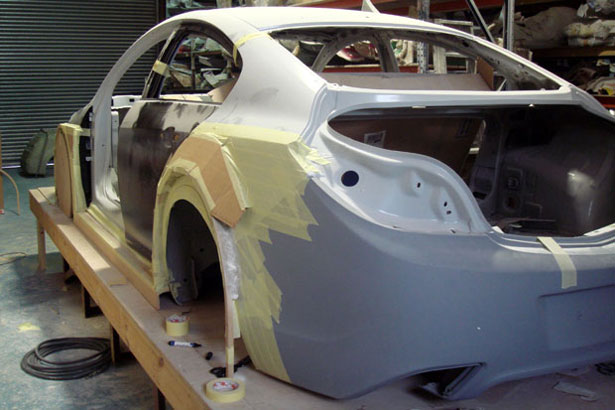
The car set on flat bed at correct ride height
The whole concept of British Touring Cars is that the cars we race represent the road cars that you or I might drive on the street. Where other race series have adopted a silhouette concept, where all the cars have an identical chassis to which different bodywork is attached, the British Touring Car Championship has continued with the central idea that the cars we race must be the same chassis as those we buy. This concept extends throughout the regulations we must adhere to in the design of the cars. First off we must only use the road car doors, boot, wing mirrors, bonnet and roof so if we put out a tannoy announcement at a race that we need a door we really can just use one from a fans car - not that we would do that of course!
NGTC regulations are all about standardisation but of course when it comes to how a car looks, standardisation is a bit mad. We all want to see Vauxhall vs BMW vs Honda so regulations are limited to keeping a level playing field amongst the cars where possible. All the cars must be a maximum width and length which is the reason why some cars are 'stretched' for the race track a little with varying levels of success.
There are also rules about what we can change from the standard cars. Bumpers can be deepened and adjusted to allow for extra cooling but we must retain the original cars design features such as the grill position and design details such as the VXR 'fang' on the front bumper. Front wings should be extended to cover the wider track the cars all have but must not be radically altered from the original.
Of course some teams do seem to have a little more poetic licence with this than we do, but there you go. We originally went with a flattened front wing for better aerodynamics (the flat top adds to front corner downforce) but weren't allowed under the rules.
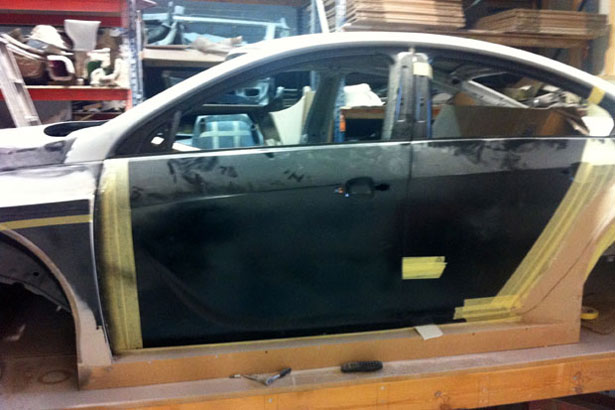
Fitting standard doors for fitment check
All the NGTC cars must run identical front splitters; these are the flat panels under the front bumper which extend under the front sub frame. The size is dictated by the bumper design of the base model but can only extend by a maximum amount. The bigger teams use all kinds of flash materials for these but most smaller teams use good old fashioned wood. Splitters have a habit of getting wrecked in races so are pretty much treated as a sacrificial item.
Aerodynamics was one of the main reasons we decided to use the Insignia as the base model as the standard road car has one of the best drag co-efficient ratings on the road. Its saloon shape is much more efficient than a hatch design in terms of cutting through the air but also its wider width meant that our bodywork design could concentrate on maximising this advantage rather than simply trying to extend the bodywork over the wheels. Arch extensions may look aggressive but they act as air brakes at speed. The net result is that the Insignia should always be pretty high up in the speed trap times - we simply cut though the air better than the other cars.
This quest for aerodynamics extends throughout the car design. The rear arches are extended into the rear doors to smooth airflow over the rear bumper which is a standard item so they are cheaper to replace in the event of damage.
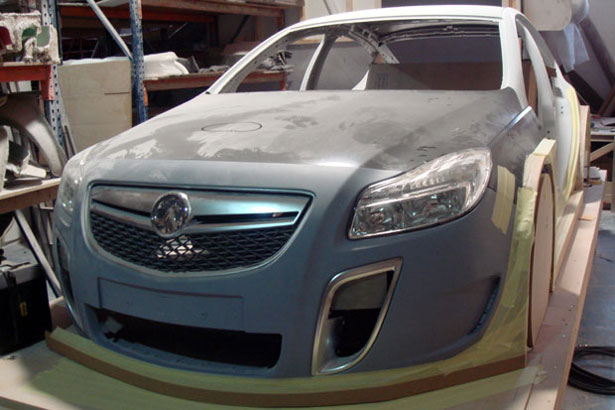
Body shell with standard Insignia VXR bumper fitted
All the other panels are made from fibreglass which is light and cheaper than carbon fibre which is banned. Standard wing mirrors must be used but internals can be removed to lighten them - you'd be amazed how much a wing mirror weighs these days. The same applies to the doors which are standard but all the crash protection bars are removed from inside to again save weight. We must run standard front and rear lights. The bonnet must be a standard item but we are allowed to add vents to aid cooling from the turbo charger.
All the NGTC cars must run a wide box section side sill. The idea here is that replacing doors is more expensive than replacing side sills. The actual process of making the bodywork is straight out of a Blue Peter episode. Whilst some teams spend millions on computer aided design, we do it the old fashioned way with tape, cardboard and filler being used to design the overall shape which is then moulded into a plug. This plug is used to create a panel mould from which we get the final panel. It's an expensive process to design and set up but relatively cost effective to replace panels as they're damaged.
NGTC regulations also extend to the rear wing which is identical for all the cars. The angle of this wing is dictated by the organisers based on wind tunnel testing of the base model car. All the teams must attend a wind tunnel with a standard road version with the rear wing attached and testing is done to set the angle for each car.
Teams are allowed to adjust this angle for different circuits but only by a prescribed amount, the scrutinisers even have a little wooden tool to check wing angle after each race.
Next time we will get into the power part of the cars.
John #66
Touring Car content supplied by MJP Media
Additional gallery:
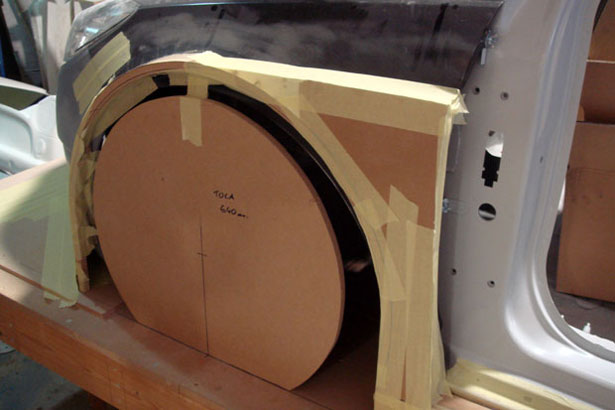
We originally went for a flat top edge on the wings for enhanced aerodynamics but TOCA banned it
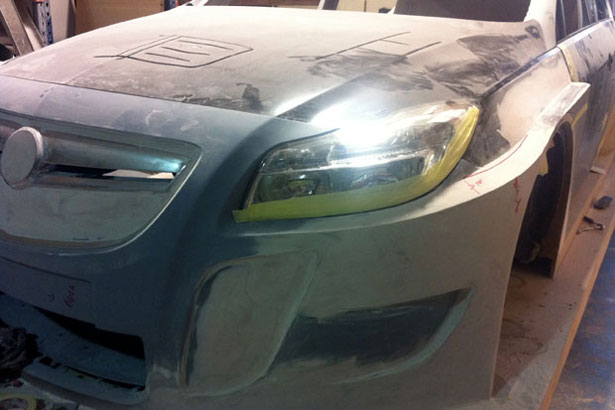
This is the design we originally wanted
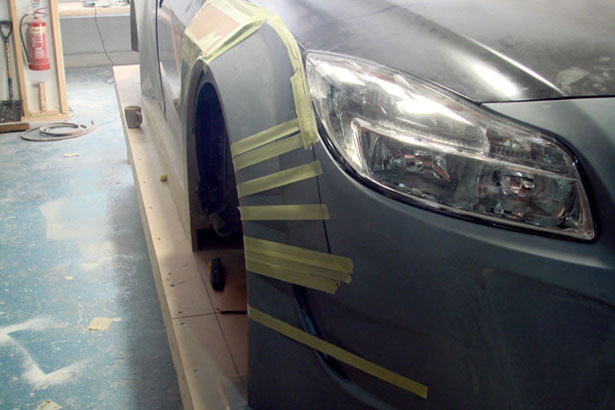
The revised front arch
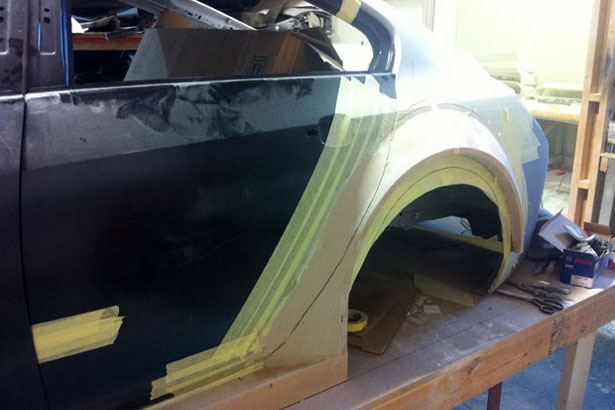
Rear arch showing the smoothing into the rear door for enhanced aerodynamics
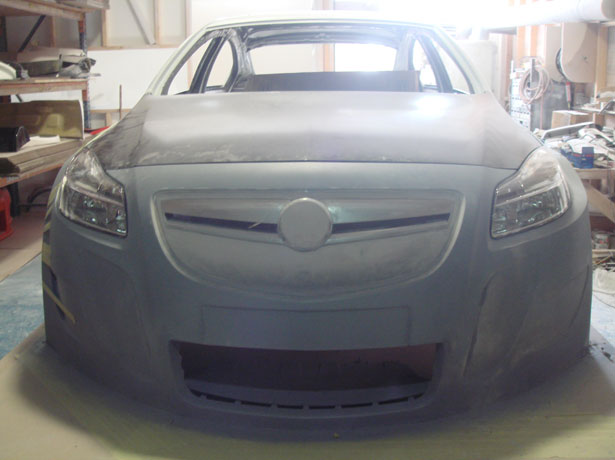
The finished front bumper and front wing design
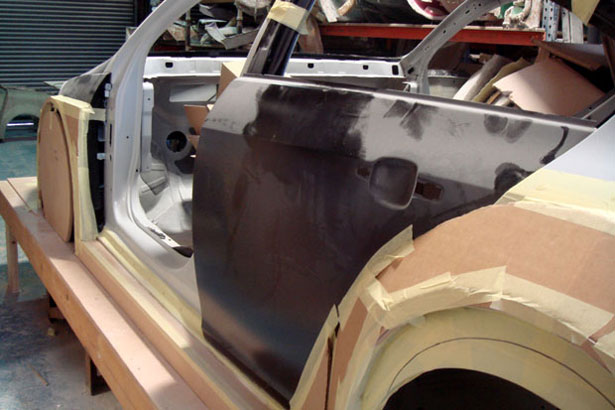
Box section side sills designed to protect the doors
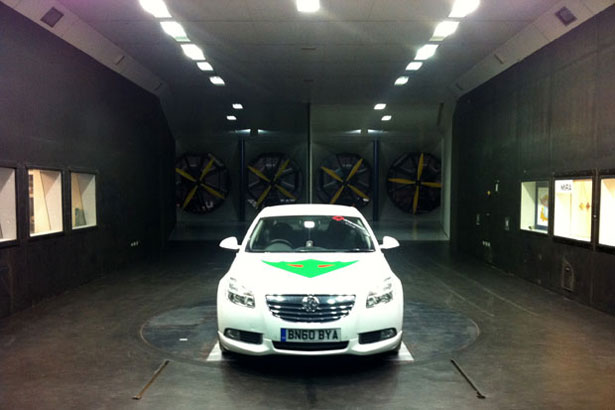
Standard car at MIRA for wind tunnel testing
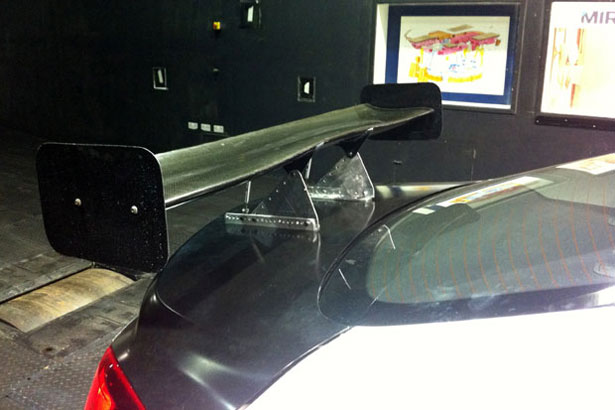
Adjusting the TOCA rear wing height on a standard car
TOURING CARS - LATEST NEWS
Race reports and previews from the British Touring Car Championship plus British interests in other international Touring Car series
 BTCC - Donington Park - Preview
BTCC - Donington Park - Preview
Following the thrills and spills at the opening rounds, the Dunlop MSA British Touring Car Championship now heads to Donington Park on April 14th and 15th for the 2nd meeting of the 2012 season.
 BTCC - Brands Hatch - Race 3 Report - 1/4/12
BTCC - Brands Hatch - Race 3 Report - 1/4/12
Jason Plato wins the final race of the day at Brands Hatch for MG KX Momentum Racing following an action-packed race.
 BTCC - Brands Hatch - Race 2 Report - 1/4/12
BTCC - Brands Hatch - Race 2 Report - 1/4/12
Matt Neal takes victory in the 2nd race as Jason Plato gets his first podium finish for MG KX Momentum Racing.
 BTCC - Brands Hatch - Race 1 Report - 1/4/12
BTCC - Brands Hatch - Race 1 Report - 1/4/12
Rob Collard wins the 1st race of the 2012 BTCC season in front of a bumper crowd at Brands Hatch amid dramatic action further down the field.
 BTCC - Brands Hatch - Qualifying - 31/3/12
BTCC - Brands Hatch - Qualifying - 31/3/12
Dave Newsham from Inverness secures pole position for the first race of the 2012 British Touring Car Championship at Brands Hatch.
 BTCC - Brands Hatch - Free Practice - 31/3/12
BTCC - Brands Hatch - Free Practice - 31/3/12
Rob Collard and Andrew Jordan top the timesheets in free practice at Brands Hatch ahead the first race of the 2012 BTCC season.
A VIEW FROM THE DRIVER'S SEAT
A regular account of life in the British Touring Car Championship from the driver's point of view
 Car Wars - Episode 3: Revenge of The Regulators
Car Wars - Episode 3: Revenge of The Regulators
In this episode John Thorne tells us how the regulations affect the design of BTCC cars and explains how the rules ensure the cars on the track look as close as possible to the cars on the road.
 A View From The Drivers Seat: Brands Hatch Race Report
A View From The Drivers Seat: Brands Hatch Race Report
Following an eventful and emotional weekend, John Thorne describes Thorney Motorsport's first experience in the BTCC.
 Car Wars - Episode 2: Attack of the Cloned Parts
Car Wars - Episode 2: Attack of the Cloned Parts
Team boss and lead driver of Mirror Online-sponsored Thorney Motorsport British Touring Car Team John Thorne explains the new Next Generation rules as he prepares his car for the new season.
 Car Wars - Episode 1: The Insignia Menace
Car Wars - Episode 1: The Insignia Menace
Mirror Online-sponsored Thorney Motorsport are prepping their Vauxhall Insignias for the new British Touring Car Championship season. Team boss John Thorne explains how it's done.
 Preparing for British Touring Cars in 2012: We meet team owner John Thorne
Preparing for British Touring Cars in 2012: We meet team owner John Thorne
We caught up with the man running the Mirror Online-sponsored Vauxhall Insignia in the 2012 British Touring Car Championships, John Thorne.
 View from the driver's seat: British Touring Car driver John Thorne
View from the driver's seat: British Touring Car driver John Thorne
Thorney Motorsport team owner and driver John Thorne prepares his Mirror Online-sponsored team for the 2012 British Touring Car Championship.
